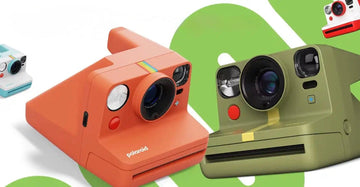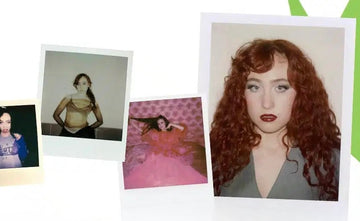Mastering Polaroid Photography in Cold Weather: Tips and Tricks for Stunning Instant Shots
por Дашка Шипунова en Jul 29, 2025

Introduction: The Joys and Challenges of Polaroid Photography in Winter
Polaroid photography has long been a beloved medium for capturing the world around us, with its unique aesthetic and instant gratification. However, when the temperatures drop and winter sets in, Polaroid enthusiasts may find themselves facing a new set of challenges. From keeping the camera and film warm to ensuring proper development, shooting Polaroids in cold weather requires a bit of extra care and attention.
In this comprehensive guide, we'll dive deep into the tips and techniques you need to master Polaroid photography in cold conditions. Whether you're a seasoned Polaroid shooter or just starting out, you'll learn how to overcome the obstacles of winter and capture stunning, vibrant instant shots that will make your friends and followers swoon.
Preparing Your Gear: Keeping Your Polaroid and Film Warm
The first and most crucial step in successful Polaroid photography in cold weather is ensuring that your camera and film are properly insulated and kept at the right temperature. Exposing your Polaroid gear to the frigid outdoor air can have disastrous consequences, leading to blurry, washed-out, or even completely ruined shots.
To combat this, we recommend keeping your Polaroid camera close to your body, tucked safely inside your coat or jacket. This will help maintain the camera's internal temperature and prevent it from becoming too cold. Additionally, you can consider investing in a camera bag or case that is specifically designed for cold-weather use, with insulation and weatherproofing to keep your gear protected.
When it comes to the Polaroid film itself, the same principle applies. Once you've taken your shot, it's crucial to keep the developing print close to your body, either in an inner pocket or nestled against your skin. This will help the chemicals within the film stay warm and ensure proper development, resulting in vibrant, true-to-life colors and sharp details.
Remember, the key is to minimize the time your Polaroid gear spends exposed to the cold. By keeping your camera and film close to your body, you'll be well on your way to capturing stunning winter Polaroid shots.
Mastering the Polaroid Development Process in Cold Weather
Proper development is essential for achieving the best possible results with Polaroid photography, and this becomes even more critical in cold weather conditions. The chemical reactions that occur during the development process are highly sensitive to temperature, and exposing your freshly taken Polaroid print to the frigid air can lead to a host of issues.
To ensure your Polaroid prints develop beautifully, even in the coldest of temperatures, follow these key tips:
- Keep the print close to your body: As mentioned earlier, it's crucial to keep your Polaroid print close to your body, either in an inner pocket or pressed against your skin, as you wait for it to fully develop. This will help maintain the necessary warmth and prevent the chemicals from becoming too cold.
- Avoid bending or folding the print: While it may be tempting to tuck the print away quickly, be sure to handle it with care and avoid bending or folding it. This can disrupt the development process and lead to unwanted distortions or damage to the image.
- Time the development carefully: Pay close attention to the recommended development time for your Polaroid film, and be prepared to adjust it slightly based on the temperature. In colder conditions, the development process may take a bit longer, so be patient and allow the print to fully develop before revealing it.
- Consider using a development sleeve: If you're shooting in particularly frigid conditions, you may want to invest in a Polaroid development sleeve or pouch. These specialized accessories are designed to insulate the print and maintain the optimal temperature during the development process, helping to ensure consistent and vibrant results.
By following these best practices for Polaroid development in cold weather, you'll be able to capture stunning, true-to-life instant shots that will impress your friends and followers.
Shooting Techniques for Polaroid Photography in Winter
In addition to properly preparing and caring for your Polaroid gear, there are also a few key shooting techniques you can employ to ensure the best possible results in cold weather conditions. From adjusting your camera settings to being mindful of your surroundings, these tips will help you navigate the unique challenges of winter Polaroid photography.
Adjusting Your Camera Settings
One of the most important considerations when shooting Polaroids in cold weather is the impact of temperature on your camera's settings. The cold can affect the camera's internal mechanisms, leading to potential issues with exposure, focus, and even shutter speed.
To combat this, we recommend the following adjustments to your Polaroid camera settings:
- Increase the exposure time: In cold conditions, the camera's light meter may not be as accurate, leading to underexposed shots. To compensate, try increasing the exposure time slightly, which will allow more light to reach the film and result in a brighter, more vibrant image.
- Adjust the aperture: Similarly, you may need to adjust the aperture setting on your Polaroid camera to account for the changing light conditions. Experiment with a slightly wider aperture to let in more light and achieve the desired exposure.
- Monitor the film speed: Polaroid film can be sensitive to temperature changes, and the film speed (or ISO) may be affected by the cold. Keep a close eye on the film speed and be prepared to adjust it accordingly to maintain the best possible image quality.
Embracing the Winter Landscape
While the cold weather may present some technical challenges, it also offers a unique opportunity to capture the beauty of the winter landscape through your Polaroid lens. From the sparkling snow-covered trees to the cozy, atmospheric scenes of a winter wonderland, there's a wealth of stunning subject matter to explore.
When shooting Polaroids in the winter, be mindful of the changing light conditions and how they can impact your compositions. The soft, diffused light of an overcast day can create a beautiful, moody atmosphere, while the warm glow of the sun peeking through the clouds can add a touch of magic to your shots.
Additionally, don't be afraid to experiment with different angles and perspectives to capture the unique textures and patterns of the winter landscape. Get low to the ground to capture the intricate details of the snow, or climb to a higher vantage point to showcase the sweeping, panoramic views.
Embracing the Unpredictable
One of the joys (and challenges) of Polaroid photography in cold weather is the element of unpredictability. The ever-changing conditions, from sudden snowstorms to unexpected bursts of sunshine, can create a sense of excitement and spontaneity that is inherent to the Polaroid experience.
Rather than fighting against the unpredictable nature of winter, embrace it! Be prepared to adapt your shooting techniques on the fly, and don't be afraid to take risks and try new approaches. The beauty of Polaroid photography is that each shot is a unique, one-of-a-kind creation, and the unexpected can often lead to the most captivating and memorable results.
Remember, the key to successful Polaroid photography in cold weather is to remain flexible, patient, and open to the possibilities. By embracing the challenges and the unexpected, you'll be able to capture stunning, evocative images that truly capture the magic of winter.
Showcasing and Sharing Your Polaroid Masterpieces
Once you've mastered the art of Polaroid photography in cold weather, it's time to share your stunning creations with the world. Whether you're posting your shots on social media, creating a physical portfolio, or even selling your work, there are a few best practices to keep in mind.
Sharing on Social Media
In today's digital age, social media has become a powerful platform for showcasing your Polaroid photography. When sharing your winter-themed Polaroid shots on platforms like Instagram, Facebook, or Twitter, be sure to use relevant hashtags to increase their visibility and reach. Some popular hashtags to consider include:
- #polaroidphotography
- #polaroidwinter
- #instantfilm
- #analogphotography
- #winterpolaroid
- #coldweatherpolaroid
Additionally, consider tagging the Polaroid brand and any relevant photography-focused accounts to increase your chances of being featured or discovered by a wider audience.
Creating a Physical Portfolio
While digital platforms are a great way to share your Polaroid work, there's something special about a physical portfolio. Consider compiling your best winter-themed Polaroid shots into a beautifully curated collection, either in a photo album or as a series of framed prints. This not only allows you to showcase your work in a more tangible and personal way, but it also makes for a wonderful keepsake or gift for fellow Polaroid enthusiasts.
Selling Your Polaroid Artwork
If you're particularly proud of your Polaroid photography and want to share it with the world, you may even consider selling your work. Platforms like Etsy, Society6, or even local art fairs and galleries can provide an opportunity to showcase and sell your Polaroid masterpieces to a wider audience. Just be sure to price your work fairly and consider the unique value and craftsmanship that goes into each Polaroid print.
Conclusion: Embracing the Challenges and Joys of Winter Polaroid Photography
Shooting Polaroids in cold weather may present a unique set of challenges, but with the right preparation, techniques, and a bit of creativity, you can capture stunning, one-of-a-kind instant shots that will leave your friends and followers in awe.
By keeping your Polaroid gear warm, mastering the development process, and embracing the winter landscape, you'll be well on your way to creating breathtaking Polaroid masterpieces that capture the magic and beauty of the colder months. So bundle up, grab your camera, and get out there to start exploring the wonders of winter Polaroid photography!
For more tips, tricks, and inspiration, be sure to check out our website and our Amazon store, where you'll find a wide range of Polaroid cameras, film, and accessories to help you take your winter Polaroid photography to new heights.




